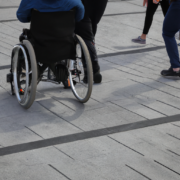The module introduces the very basics of user experience evaluation in the context of human-technology interaction. These are described through concrete evaluation cases, that demonstrate how special characteristics of certain user groups may affect, and need to be taken into account in, the evaluation design. The examples consist of field studies conducted with special user groups, such as individuals with developmental disabilities, visually impaired users, physically disabled users, and children.
Archives
The thematic module covers the main principles of speech-based human-technology interaction, focusing on spoken interfaces which facilitate accessibility. Agent design for spoken interfaces. This includes both speech output (e.g., spoken prompts for people with visual disabilities) and speech input (e.g., speech control for physically disabled personnel). The students will also be introduced to different Voice Assistants and how they are being used in facilitating accessibility in the real-world.
The thematic module introduces the student to aided augmentative and alternative communication (AAC) techniques such as the use of pictures or symbols. Lectures focus on strategies (such as PECS, first-then boards) and the use of different systems (such as ARASAAC, Mulberry or Sclera) in different situations. Technologies, culture and the environment are also briefly discussed.
The thematic module introduces the student to the definition of accessibility and discussion in society, but also to the role of disability legislation. People with disabilities are often excluded from the mainstream of society. Disabilities affect people’s lives in multiple ways, both as individuals and as part of society. Disability can also be either temporary or permanent, but accessibility is not just a temporary feature.
The course introduces the main themes of the Sustainable Digital Life programme. The course consists of topical online lectures, reading materials and written assignments.
The course consists of the following themes:
- Digital Literacy
- Digital Ethics
- Diversity, Normality and Disability
- Perspectives on Sustainability
- Visual Culture
- Sound Culture
- Gamification
- Service Design
- Sustainable Design
- Accessible Design
- Sound Design
- Visual Design
The course gives an overview of how accessibility can be taken in account in everyday communication and digital services. The topics covered in the course include: introduction to the interlingual and intermodal methods of translation and interpreting in producing accessibility services, such as subtitling, audio description, sign-language and print interpreting, environmental description, accessibility technologies, needs of different groups and stakeholders, and principles of legislation.







